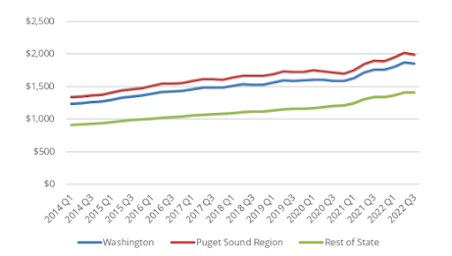The total number of people moving to Oregon slightly outpaced those moving away in 2022, according to Allied's migration map. The company's client data shows fewer people moved nationwide in 2022 compared to 2021, and in Oregon, 52.1% inbound residents outpaced 47.9% outbound.
The Phoenix-Mesa, AZ metro area was both the top departure point and destination for those moving to or from the Portland-Vancouver metro. Inbound movers came from Phoenix-Mesa AZ, Los Angeles-Long Beach, CA, Albuquerque, NM, Chicago, IL, and San Diego, CA. Outbound movers headed to Phoenix-Mesa, AZ, Denver, CO, Boise, ID, Houston, TX, and Los Angeles-Long Beach, CA.
Overall, Alied's top inbound cities nationally in 2022 were:
- Tucson
- Sarasota
- Charlotte
- Austin
- Nashville
And the top outbound cities were:
- New York City
- Anaheim
- San Diego
- Chicago
- Riverside
U-Haul's client data found Texas, Florida, South Carolina, North Carolina, and Virginia to be the top-five growth states in 2022. Oregon ranked 22nd on the list.
U-Haul's top cities moved to were:
- Ocala, Fl
- Sacramento-Roseville, CA
- Madison, WI
- Palm Bay-Melbourne, FL
- Auburn-Opelika, AL








